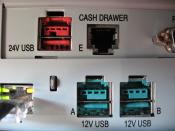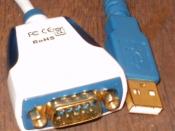Hardware & Software Requirements
Introduction
For new electronic point of sale (ePOS) hardware and software are crucial decisions. This document will discuss a list of high value items that are required in the solution selected. By no means should this list be considered all inclusive albeit just the main points that are worthy of discussion.
Hardware
The hardware should be of adequate design to withstand the rigors of convenience store environments. Accordingly, "off the shelf" PC hardware or hardware that can be purchased from major PC retailers will not be considered, since this style of generic PC hardware does not have the "retail hardening" required to survive in the convenience store environment. Retail hardening is described as, a system, that by design is fit for purpose, robustly engineered, and resistant to environmental contaminates. It should be able to resist liquid spill, and humid environments. It should prevent against electromagnetic field (EMF) interference, and be resistant to bumps and vibrations.
The hardware should be capable of normal operation, without special cooling or heating, in all but the harshest of retail outlet conditions. The recommendations for the hardware are as follows:
CPU
The CPU chip should be of Wintel design, preferably larger that one gigahertz (GHz); also, it is recommended the CPU chip be supported by the manufacturer for an extended period of time, an example is the Intel embedded series of CPU chips. The CPU should contain at a minimum of 256 megabytes (MB) of RAM; 512 MB to 1 gigabyte (GB) is preferred. The case should be equipped with adequate EMF shielding and vibration buffering devices. The case design should be of such ascetics that it meshes well with the cash drawer in an integrated, or stacked, design; as well as, function in a distributed, or under the...


